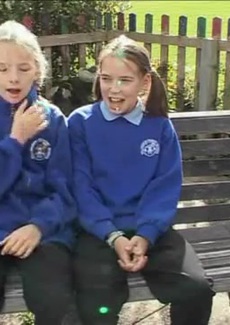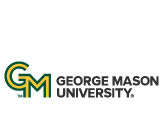On the Shelf at CCBC Libraries
-
Early Literacy Development in Deaf Children by
Call Number: HV2430 .M444 2015 -
Bilingualism and Bilingual Deaf Education by
Call Number: HV2380 .B55 2014 -
Building Bridges, Crossing Borders by Kyler Daniels was born in 1988 with a profound bilateral hearing loss. Her deafness went undetected for a year since newborn screening for hearing loss was not yet available. Kyler benefited, however, from the great support of her family and a string of excellent professionals in deaf education, including Ann Darby Getty, the author of this shared, experiential story. As soon as they realized that their daughter was deaf, Kyler's parents, who were hearing, immediately began to learn sign language. They also engaged Darby, a parent/infant educator employed by the state school for the deaf, to work with Kyler. From the age of 13 months until Kyler's college graduation 22 years later, Darby was involved in her education and development. Despite living in a rural area, Kyler enjoyed an array of services, including parent/infant education, sign language interaction/modeling, speech and language therapy, and also a cochlear implant. At the same time that she developed her speech skills, sign language continued to be a critically important facet of her communication. In grade school, she learned with other deaf students, while in high school, she worked successfully in mainstream classrooms with interpreters and notetakers. As a college graduate, gifted artist, and veterinarian's assistant today, Kyler exemplifies how a balanced approach to deaf education, using all resources at hand, can achieve remarkable results. Her story serves as a model for parents of other deaf children and the professionals who work with them.
Call Number: HV2430 G354 2014 -
Deaf Gain by Deaf people are usually regarded by the hearing world as having a lack, as missing a sense. Yet a definition of deaf people based on hearing loss obscures a wealth of ways in which societies have benefited from the significant contributions of deaf people. In this bold intervention into ongoing debates about disability and what it means to be human, experts from a variety of disciplines, neuroscience, linguistics, bioethics, history, cultural studies, education, public policy, art, and architecture, advance the concept of Deaf Gain and challenge assumptions about what is normal.Through their in-depth articulation of Deaf Gain, the editors and authors of this path breaking volume approach deafness as a distinct way of being in the world, one which opens up perceptions, perspectives, and insights that are less common to the majority of hearing persons.
Call Number: HV2380 .D425 2014 -
How Deaf Children Learn by How can parents and teachers most effectively support the language development and academic success of deaf and hard-of-hearing children? Will using sign language interfere with learning spoken language? Should deaf children be placed in classrooms with hearing children? Are traditional methods of teaching subjects such as reading and math to hearing children appropriate for deaf learners? As many parents and teachers will attest, questions like these have no easy answers, and it can be difficult for caring adults to separate science from politics and fact from opinion in order to make informed decisions about how to help deaf children learn.""In this invaluable guide, renowned authorities Marc Marschark and Peter Hauser highlight important new advances in scientific and educational research that can help parents and teachers of students with significant hearing loss.
Call Number: HV2391 .M257 2012 -
Evidence-Based Practice in Educating Deaf and Hard-Of-Hearing Students by Debates about methods of supporting language development and academic skills of deaf or hard-of-hearing children have intensified in recent years: Will using sign language interfere with learning to use spoken language? Does placement in classrooms with mostly hearing children enhance or impede academic development? Do deaf children need auditory-based phonological skills to acquire age-appropriate reading abilities? Are traditional methods of teaching subjects such as math and science effective for deaf and hard-of-hearing students? Too often, these decisions are made based on what is frequently incorrect or incomplete information and decisions---whether based on opinions, beliefs, or value judgments---are insufficient to guide practice. Instead, critical evaluation of the rapidly emerging research and related reports is needed to enhance the success of educational practice with deaf and hard-of-hearing learners.
Call Number: HV2430 .S68 2010 -
Through deaf eyes by "Through deaf eyes explores almost 200 years of Deaf life in America and presents a broad range of perspectives on what it means to be deaf. The film is propelled by the stories of people, both eminent and ordinary, and sheds light on events that have shaped Deaf lives: the creation of schools for deaf students; the debate about American Sign Language; the campaign for a deaf-friendly telephone, the TTY; the fight for a deaf president at Gallaudet University; and some very loud rock and roll. Bringing a Deaf cinematic lens to the film are six artistic works by Deaf media artists. Poignant, sometimes humorous or jarring, these films draw on the artists' own lives and cover subjects that confront not only deaf Americans, but all Americans.
Call Number: Media HV2530 .T57 2007
Streaming Videos
-
Effective Inclusion Sarah Jeffery teaches at Icknield Primary School, one of the largest providers for deaf children in a mainstream school in the country. Having taken a Certificate of Education for teaching the deaf at the University of Hertfordshire, she has particular interest in her field. Profoundly deaf herself, she works with a small number of children on numeracy and literacy skills for a few hours a day. She has an advantage in working with deaf children because she can strongly empathize with the difficulties they face. In this film she talks about the need to communicate with them, to give them confidence and belief in themselves and her wish to provide a positive role model for them. Sarah talks about the added importance of having all children in mainstream classrooms relate to those with learning difficulties and disability. She considers the value for parents in working with a teacher like herself who has themselves overcome difficulties to achieve what she has achieved.

-
Hearing Impairment in Mainstream: Rosie's World How do you meet the needs of a deaf child in your class?

Databases
-
Academic Search Premier This link opens in a new window

Articles on any subject. This is a good place to start.
-
Education Database This link opens in a new window

Articles on primary, secondary, and higher education, special education, home schooling, and adult education.
-
Education Source This link opens in a new window

Articles on early childhood, primary, secondary, and higher education, and multilingual education, and health education.
-
ProQuest Central This link opens in a new window

Articles on any subject. This is a good place to start.
Websites about Deafness and Hard of Hearing Students
-
Project Ideal: Hearing ImpairmentsThis Website is part of a teacher preparation program intended to better prepare teachers to work with students with disabilities. Project IDEAL (Informing and Designing Education For All Learners) was made possible by the Texas Council for Developmental Disabilities (TCDD).
-
U.S. Department of Education: Deaf Students Education Services
 The Department provides additional guidance about part B of the Individuals with Disabilities Education Act (IDEA) and section 504 of the Rehabilitation Act of 1973 (section 504) as they relate to the provision of appropriate education service to students who are deaf. This guidance is issued in response to concerns regarding Departmental policy on the provision of a free appropriate public education (FAPE) to students who are deaf.
The Department provides additional guidance about part B of the Individuals with Disabilities Education Act (IDEA) and section 504 of the Rehabilitation Act of 1973 (section 504) as they relate to the provision of appropriate education service to students who are deaf. This guidance is issued in response to concerns regarding Departmental policy on the provision of a free appropriate public education (FAPE) to students who are deaf.
Online from CCBC Libraries
-
Literacy and Deafness: Listening and Spoken Language, Second Edition
Publication Date: 2013-10-01 -
Modality and Structure in Signed and Spoken Languages by The realization that signed languages are true languages is one of the great discoveries of the last 30 years of linguistic research. The work of many sign language researchers has revealed deep similarities between signed and spoken languages in their structure, acquisition, and processing, as well as differences, arising from the differing articulatory and perceptual constraints under which signed languages are used and learned. This book provides a crosslinguistic examination of the properties of many signed languages, including detailed case studies of Hong Kong, British, Mexican, and German sign languages.
Publication Date: 2002-10-24 -
Deaf Children and Their Families by
Publication Date: 1995-06-30
